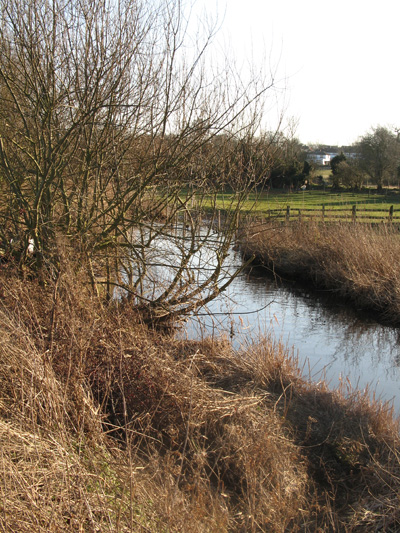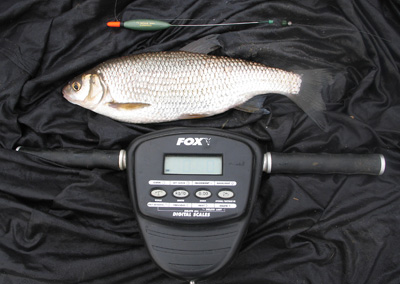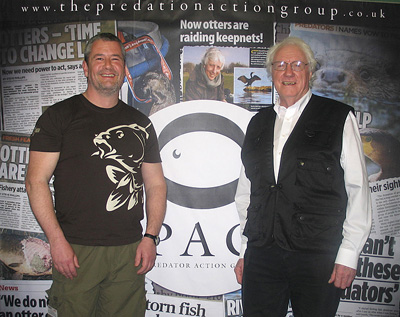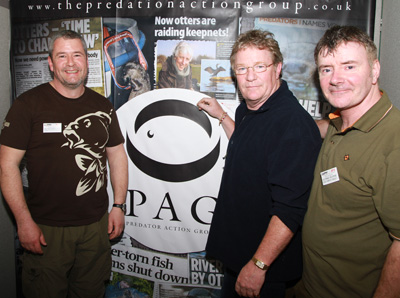Hi all.
I’m very pleased to have been asked by Ian to write a monthly diary/comment piece for the FM website. If there are some interesting aspects from my own recent fishing experiences that I feel might be of interest, then I’ll attempt to share them with you, but I may also include just about any coarse/specimen fishing related topic that happens to be trundling around in my head at the time… so the subject matter could become rather varied!
I hope you’ll find something that’s either entertaining or interesting/thought provoking, and I’ll always welcome any comment or feedback on whatever I write.
It’s the end of March as I’m typing this and I would imagine that March tends to be a busy fishing month for many coarse anglers, with a bit of a panic to grab as much river fishing in as possible before the start of the close season and plans and preparations for any spring campaigns on the stillwaters. This has certainly been the case for me and this March seems to have been particularly hectic, as I’ve also been involved in a number of angling related projects and a weekend’s attendance at one of the big carp shows.
For the most part early March was all about dace fishing.
I’ve wanted to catch a truly big dace for quite a few years and I’ve put in a reasonable amount of effort trying to catch one. Most of my dace fishing over the last few years has been concentrated on the river Kennet, which is a river that has produced some ‘monster’ dace, but the stretches I was concentrating on appeared to be a little past their ‘sell by’ date and although I was able to top up my personal best by an ounce or so, the truly big dace of a few years back appeared to have died off.
 At the back end of last year possibilities for catching a PB dace on a totally different river slightly closer to home were starting to filter through the grapevine and it seemed as though there had even been the odd genuine 1lb plus fish caught. For totally different reasons I was already interested in a ticket for a club that had a control of a couple of interesting stretches of the river on their books, so it didn’t take long to decide that the club ticket should be bought and an investigative trip or two to the river pencilled in.
At the back end of last year possibilities for catching a PB dace on a totally different river slightly closer to home were starting to filter through the grapevine and it seemed as though there had even been the odd genuine 1lb plus fish caught. For totally different reasons I was already interested in a ticket for a club that had a control of a couple of interesting stretches of the river on their books, so it didn’t take long to decide that the club ticket should be bought and an investigative trip or two to the river pencilled in.
I started fishing the most promising stretch in January. Early results were quite encouraging and over a few sessions I was able to increase my PB from 11oz to 12oz, then 13oz and eventually a splendid fat female of 14oz came my way. Therefore my basic plan for the first two weeks of March was to cram in as many dace sessions on the river as I possibly could; trying to take every advantage of the females being at their heaviest prior to spawning. It was very interesting to see how much difference there was between the males and females at this time of year, especially to the touch. The males felt almost dry and without slime, with a rough sandpaper-like feel to them, while the larger females felt extra soft and, not surprisingly, looked especially fat.
The fishing itself was quite physically demanding as I was spending virtually the full daylight hours on my feet trotting a stick float through my chosen swim, with usually only a break of around an hour or so around lunchtime when the bites appeared at their most difficult to come by. This was often the only period when I actually sat down for any length of time while I stuffed some food down my neck and re-hydrated with a few good slugs of juice from my drinks bottle. I’d sometimes take the opportunity in the middle part of the day to check out some of the other swims on the stretch as well, trying to spot any extra big dace with the aid of my Polaroid glasses while the sun was at its highest.
Depending on the swim and to some extent the conditions on the day, the actual results varied between slow and manic. Some swims, although looking the part, didn’t appear to hold too many fish and bites could be very hard to come by. In contract other swims were full of fish and once in a feeding mood the fishing could be extremely hectic!
Unfortunately many of the fish I was catching were not my target species and many roach, chub, barbel, gudgeon and perch were caught… but there were enough dace amongst everything else to make it all enjoyable and worthwhile.
 Catching barbel on the float was a new experience for me and although they weren’t terribly big fish it was quite exciting catching the first few on the comparatively light float gear that I was using for the dace. However after a while the barbel could become something of a nuisance at times, as hooking one of them usually meant that that I’d be playing it for an average of approximately ten minutes and along with the general swim disturbance etc. I guessed that even though I often continued to feed the swim while playing a barbel, I’d effectively loose around 20 minutes fishing for every barbel that was hooked.
Catching barbel on the float was a new experience for me and although they weren’t terribly big fish it was quite exciting catching the first few on the comparatively light float gear that I was using for the dace. However after a while the barbel could become something of a nuisance at times, as hooking one of them usually meant that that I’d be playing it for an average of approximately ten minutes and along with the general swim disturbance etc. I guessed that even though I often continued to feed the swim while playing a barbel, I’d effectively loose around 20 minutes fishing for every barbel that was hooked.
One day I caught 13 barbel on the float gear, which by my crude reckoning meant that I’d effectively lost nearly four hours of dace fishing on that particular day. Another day I’d caught 11 barbel by early afternoon and so I simply stopped trotting the float down to the area where I was hooking most of them and concentrated on other areas of the swim to cut down on the lost time that hooking any more barbel would cost.
The larger chub could also prove to be a bit of a headache, as they tended to disturb the swim quite a bit during the fight. However I’d come to the conclusion that some of the very biggest dace were often to be found in the company of the groups of chub, so catching chub wasn’t something that could be avoided. I was usually a case of catching whatever was willing to grab the bait and hoping that a big dace would turn up amongst the catch.
The early March sessions were encouragingly productive and while on average one dace worth weighing (i.e. looking to be of 10oz or more) was getting caught, one particular session produced a nice fish of 11.5oz and two beauties each weighing in at 13oz!
However the couple of sessions during the last week of the season proved more of a struggle and despite a continuation of the unseasonably warm weather proper bites were hard to come by. One day was particularly frustrating, as with the aid of the Polaroids and clear water I could see that the fish were taking only one or two maggots out of every little handful (I was introducing around 10 -12 maggots each time) and the hookbait was being ignored virtually every time. Introducing fewer baits each time didn’t improve the odds, as everything was simply ignored; it was as if they wanted a choice.
The fishing on that particular occasion only really improved later in the day when some sort of extra influx of water took place and the levels rose by an inch or two and a little extra colour was introduced. I did finally catch a decent dace, which a few days before would have taken a quick trip to the scales. However she was long and lean and looking rather battered. In fact this fish and a couple of other females that came along before the end of the session were all pretty lean and looked as though they’d just spent half an hour in a washing machine. The dace had obviously spawned very recently, which would likely explain their lack of enthusiasm when it came to having something to eat.
Most of the other anglers fishing the stretch were after the barbel and chub and comparatively few bothered with the float gear. However a number of anglers did start to take in interest in what I was doing, especially on the days when I was catching plenty, and I had quite a few asking questions about my trotting gear and methods and on a couple of occasions I had guys asking if it would be ok to sit watch me fish for a while. I certainly wouldn’t claim to be any kind of expert when it comes to trotting a stream and I’m sure a seasoned match angler with plenty of river experience would make my efforts look decidedly amateurish. However as I had a number of enquiries I’ll briefly outline what I was doing.
The kit that I was using for trotting for dace was nothing special; in fact my rod and reel combination would probably be best described as ‘outdated’, as both are probably in the region of about 20 years old. I’d suggest that so long as you’re using sensible, functional trotting gear and you can manage to hold the kit for long periods of time, then simply use whatever you’re comfortable with. I don’t use a centre-pin reel for trotting simply because I’ve never owned one. The reel I use is a small and reasonably lightweight fixed-spool model that I won as a prize ‘donkey’s’ years ago.
The main line choice for trotting is, for me, pretty straightforward as there are a couple of brands that appear to have very similar properties and have stood the test of time. I use either Drennen Floatfish or standard Baylor Perlon, usually in 3.2 or 4lb breaking strain. I like to use a main line that is a reasonable percentage stronger than my hooklength, so that if there is a breakage, for whatever reason, then it’s virtually always just a hook and a bit of hooklength line that’s lost and nothing more.
The line floatant sprays that are available are very useful and I found that a couple of sprays on the spool at the start of the session followed by a quick top up on a couple of occasions during the day made sure the line behaved itself. In fact line spray is so good that I probably delayed renewing my main line for way too long and it was starting to resemble a well used ‘Slinky’ by the last day of the season.
The choice of what float to use was interesting and I’d sometimes switch floats and shotting pattern during the day as conditions and the changing way in which the fish fed dictated. As a rough guide I tended to use a reasonably heavy float to make control easier if I was expecting the majority of the bites to occur part way through, or towards the end of the trot. Conversely, I’d go for as small/light a float as possible if the bites were expected on the drop or within the first few yards of the trot.
I used a variety of hooks tied to nylon, as my best efforts to tie my own can never match the neatness of the ones I can buy from the tackle shop. My only frustration with this arrangement is that most pre-tied hooks readily available nowadays are tied to the strength of line more suitable to commercial carp type scenarios rather than more traditional river species like roach and dace and I found myself digging into my old stocks of ready tied hooks to find what I wanted. A frequent challenge was finding the right hook on the day, or even that part of the day, as I’m sure this varied quite frequently. It was certainly noticeable that what had been a successful size and pattern of hook on one day was not necessarily the best choice to make on the next session. It was difficult to come up with a formula to predict what would be the right hook at the time, so often a little bit of trial and error would have to take place.
A bit of kit that I have found to be very useful while trotting is a boilie pouch that I use as a bait apron. The one I use is a Nash Cobra pouch, which has a large single pouch (with a removable, washable lining) and a zip round the top so that the contents can be sealed in if necessary. The pouch became ever so useful during the dace trips, especially, as I’ve mentioned earlier, I usually prefer to stand whenever I’m trotting. It certainly helps to simply dip your hand in for a pinch of maggots without taking your eyes off the float or whatever and is of particular benefit when you’re trying to establish something of a rhythm of frequent feeding etc. I’d also loop a cloth around the pouch belt to wipe my hands clean of slime etc. and pop a plastic disgorger into the pouch along with the bait which meant that I only really had to break concentration from the process of feeding/casting/trotting when a fish needed to be landed using the landing net or some tackle adjustment like a change of hook was required.
I’ll hopefully be in a position to plan in a few dace trips next winter and I’m looking forward to putting into practise the lessons learnt from the season just gone. I’ve also got that special target of a 1lb dace to attempt to achieve which will help to add extra excitement to any future sessions.
 Closer to home the upper reaches of the River Ouse are starting to show something of a return to form of the dace fishing that the river once enjoyed many years ago. So it’s possible that I’ll be chasing specimen dace on the Ouse in the not too distant future. I’ll have to keep my fingers crossed that the cormorants don’t discover these new shoals of fish, as they’ve decimated the smaller shoal fish in certain areas in the past. On some stretches of the river I could happily spend the day running a stick float through a swim and expect consistent action with the possibility of roach, dace, small chub, bleak, skimmers, gudgeon and other species making up a lovely mixed bag of fish. However that was over ten years ago and nowadays you would struggle for a bite using the very same tactics in the same swims.
Closer to home the upper reaches of the River Ouse are starting to show something of a return to form of the dace fishing that the river once enjoyed many years ago. So it’s possible that I’ll be chasing specimen dace on the Ouse in the not too distant future. I’ll have to keep my fingers crossed that the cormorants don’t discover these new shoals of fish, as they’ve decimated the smaller shoal fish in certain areas in the past. On some stretches of the river I could happily spend the day running a stick float through a swim and expect consistent action with the possibility of roach, dace, small chub, bleak, skimmers, gudgeon and other species making up a lovely mixed bag of fish. However that was over ten years ago and nowadays you would struggle for a bite using the very same tactics in the same swims.
Cormorants, otters and fish predation issues in general occupy quite a bit of my thinking nowadays and I’ve become heavily involved over the last few years in trying to do something about these serious problems. I was among the small group of individuals who formed the nucleus of what became the Predation Action Group (PAG) a few years back and we’ve gradually become organised and have moved forward enough to start making an impact. Earlier in March we we’re able to have our first stand at one of the major shows – the Carpin’ On Show at Five Lakes in Essex.
 I was due to man the stand over both days of the weekend show and I must confess that I was a little apprehensive about the reaction we might get from the attendees. However I needn’t have worried because the support from virtually everyone who stopped to chat or ask questions was incredibly positive. There was also plenty of fantastic support from many of the angling ‘stars’ at the event and it was really quite heart-warming to discover how much the aims of the PAG and our efforts to highlight and document the impacts of the predation problems were appreciated.
I was due to man the stand over both days of the weekend show and I must confess that I was a little apprehensive about the reaction we might get from the attendees. However I needn’t have worried because the support from virtually everyone who stopped to chat or ask questions was incredibly positive. There was also plenty of fantastic support from many of the angling ‘stars’ at the event and it was really quite heart-warming to discover how much the aims of the PAG and our efforts to highlight and document the impacts of the predation problems were appreciated.
Fundraising for the group was also well supported, which meant that overall it was a fantastically successful event. My sincere thanks must go to Pip Dean and the girls for organising the stand and accommodation over the weekend and to Tim Paisley, Jerry Bridger and Mark Holmes for all their help and support over the weekend.
If you care about the future of our sport, have concerns about predation and would like to find out more about the Predation Action Group and its aims, then please visit the website HERE. The website has a load more photos and a write up on the Carpin’ On show weekend in the news section and also has a contacts section where details of how to get in touch with the group and how donations can be made to the fighting fund.
A quick check on the word count is highlighting that I’m already well over my suggested numbers so I’d better bring this to a pretty swift conclusion.
I hope you’ve enjoyed reading my initial diary piece and that you’ll join me again in about a month or so.
So, until then, “Happy fishing!”
Tony










